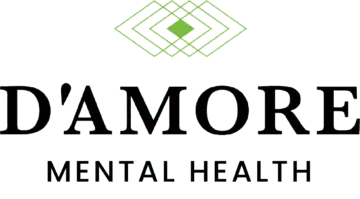Post-traumatic stress disorder (PTSD) and post-traumatic stress injury (PTSI) are often used interchangeably, but they are quite different. PTSI is an injury that can occur after someone experiences a traumatic event. These physical injuries are typically extensive and traumatic to the person.
While PTSD is a mental health condition that can develop after someone experiences or witnesses a traumatic event. Still, PTSI, the two can present similar symptoms and be addressed using the same treatment options.
What is PTSD?
PTSD, or post-traumatic stress disorder, is a mental health condition that can be triggered by a terrifying event. It often occurs after witnessing or experiencing a natural disaster, serious accident, terrorist attack, violent crime, or war.
People with PTSD may have trouble functioning in their everyday lives and feel tense or on edge. They may also have flashbacks, nightmares, and intrusive thoughts about the traumatic event. PTSD can be debilitating, but there are treatments available that can help people manage their symptoms.
What is PTSI?
Post-traumatic stress injury (PTSI) is a relatively common mental health condition. PTSI can develop in response to exposure to a potentially traumatic event. However, PTSI is slightly different from PTSD, which is discussed more frequently. PTSI can manifest as a range of problems.
These include full-fledged mental disorders like PTSD. Along with other mental health conditions that may not meet the diagnostic criteria for PTSD. However, they still interfere with daily functioning in social, work, or family activities.
One of the key goals of PTSI treatment is to reduce the stigma often associated with the “disorder” in PTSD. Proponents of the name change argue that people are more likely to accept their condition and treatment under the new name. This is because when they know it’s an injury instead of a disorder, it lessens the stigma. That’s partly because a disorder can feel like a weakness and is usually unrelatable.
PTSI vs. PTSD
PTSD and PTSI are used as synonyms for each other because both conditions present similar symptoms. The difference between PTSD and PTSI boils down to what caused the symptoms. PTSD is a mental disorder, whereas PTSI is a biological injury. According to researchers, some changes in the nervous system influence the development and maintenance of PTSI.
Some experts argue that changing the name from PTSD to PTSI will alter how people perceive the condition. This is especially true since there is a stigma attached to PTSD.
The stigma can be attributed internally or externally. Internal stigma can come from a person’s personal beliefs about the conditions. While external stigma can come from public or outside perception of the conditions.
Symptoms of PTSI/PTSD
Individuals who have experienced a traumatic event may suffer from a range of psychological symptoms, including:
- Intrusive thoughts. These are usually vividly-replayed memories of the traumatic event that can intrude into a person’s consciousness. These memories can occur at any time, often causing immense distress.
- Avoidance of triggers. To avoid these painful memories, people with PTSD may try to avoid anything that could act as a trigger. Triggers can include certain places, people, or activities. Unfortunately, this can lead to a feeling of isolation and loneliness.
- Negative thoughts. Many people with PTSD also develop negative thinking patterns. These patterns may include believing that they are worthless or that the world is dangerous. This can lead to feelings of paranoia and anxiety.
- Hyperarousal. This refers to a state of heightened arousal in which a person is constantly on guard, feeling jumpy and easily startled.
These symptoms can be debilitating and make it difficult to function in day-to-day life. However, there are effective treatments available for those who suffer from PTSI.
PTSD and PTSI Treatment
There are a variety of treatment options available for people who have PTSD or PTSI. These treatment options include:
Trauma-Informed Care
Trauma-informed care is an approach that recognizes the impact of trauma on the person. While also striving to provide a supportive environment that can help individuals heal. It considers the individual’s unique needs and experiences and seeks to empower them in their recovery.
Trauma-informed care can involve different types of treatment, such as talk therapy, medication, and community support. By taking a holistic and compassionate approach, trauma-informed care can help individuals with PTSD or PTSI. Trauma-informed care helps people to begin healing their past wounds.
Therapy
Therapy is one of the most commonly used treatment methods, and it can take many different forms.
- Cognitive Processing Therapy (CPT) focuses on helping the individual understand and process the thoughts and emotions associated with the trauma. The goal is to help the individual learn new ways of thinking about the event. By reframing thoughts, people can help reduce the intensity of their emotional reactions.
- Prolonged Exposure Therapy (PET) involves gradually exposing the individual to memories and situations associated with the trauma. The aim is to help the individual process these memories more adaptively. While also reducing their avoidance of situations that remind them of the event.
- Eye Movement Desensitization and Reprocessing (EMDR) is a type of therapy that is particularly helpful for people with PTSD. EMDR involves having the person revisit their trauma in a safe and controlled environment. While the person is also receiving guidance on how to process the experience healthily.
- Stress Inoculation Training (SIT) is another type of therapy that can be helpful for people with PTSD. SIT focuses on helping the person develop coping skills that can be used in times of stress. This may involve learning relaxation techniques, how to reframe negative thoughts, and how to manage triggers.
- Narrative Exposure Therapy (NET) is a treatment that helps people with PTSD by having them repeatedly tell their stories. NET is effective in treating PTSD and PTSI and can be done in a group or individual setting. The therapist will help the person organize their story, and then they will encourage the person to tell it repeatedly. The goal is for the person to become more comfortable with their story.
Medications
There are a variety of medications that can be used to treat PTSD. Antidepressants, anti-anxiety medications, and antipsychotics are all commonly prescribed.
- Antidepressants can help to improve mood and sleep
- Anti-anxiety medications can help to reduce symptoms of anxiety and agitation.
- Antipsychotics are typically used for more severe cases of PTSD, where there is a risk of developing psychotic symptoms.
Get Help with Trauma in Southern California
If you are struggling with PTSD or PTSI, we want to help. Our trauma treatment can assist you in developing healthier coping skills and address the issues holding you back. We utilize trauma-informed care to treat our patients struggling with the effects of trauma.
At D’Amore Mental Health, we have proven experience treating conditions such as PTSD and PTSI. Our team of highly-skilled professionals is ready to develop a customized treatment plan to address your specific needs. We want all of our patients to find their way to a life free from the complications of trauma.
Our team at D’Amore Mental Health understands that seeking treatment for trauma can be difficult. We want to help you break the stigma and build a strong foundation for long-term recovery.





































